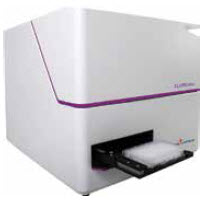
14 Questions to Ask When Buying Microplate Technology
Handlers:
 BMG LABTECH CLARIOstar® with new Atmospheric Control Unit www.bmglabtech.com How many plates and plate types can the handler accommodate?
BMG LABTECH CLARIOstar® with new Atmospheric Control Unit www.bmglabtech.com How many plates and plate types can the handler accommodate?- What is the transfer speed?
- Can the handler operate in portrait and landscape configurations?
- Does the handler fit into a hood or biosafety cabinet?
- Is the handler compatible with a wide variety of other instruments?
- Does it come with a barcode reader for easy microplate identification?
Readers
- How many read modes are offered?
- What kind of detection technology is used?
- Is it upgradeable? If so, can the upgrade be installed on-site, or must it be shipped back to the factory?
- Is the reader automatable?
- Is the software integrated and user-friendly? Does it allow for pre-programmed and custom protocols? What kind of analysis is offered? How is data exported?
- Is on-site training available? Is there a fee?
- What options are available? How many of those do you actually need?
- What assay validation data is available for the reader?
Which Microplate Reader Do You Use?
| Absorbance | 59% |
| Alphascreen | 3% |
| Fluorescence Polarization | 12% |
| Time-Resolved Fluorescence (TRF) | 10% |
| Time-Resolved Fluorescence Energy Transfer (TF-FRET) | 3% |
| Luminescence Reader | 31% |
| Multi-Mode Reader | 33% |
| Microplate Spectrophotometer | 46% |
| Other | 1% |
Top 10 Features/Factors Respondents Look For When Purchasing a Microplate Reader
| Ease of use | 82% |
| Product performance for intended application | 78% |
| Sensitivity | 69% |
| Price | 67% |
| Low maintenance/operating costs | 65% |
| Software for data collection/analysis | 60% |
| Flexibility (available detection modes) | 59% |
| Service and support | 58% |
| Resolution | 57% |
| Warranty | 48% |
Looking for a New Microplate Reader?Lab Manager’s Microplate Reader Product Finder utilizes a querybased system to quickly narrow the field of available microplate readers to those that specifically meet the requirements demanded by your application. |










